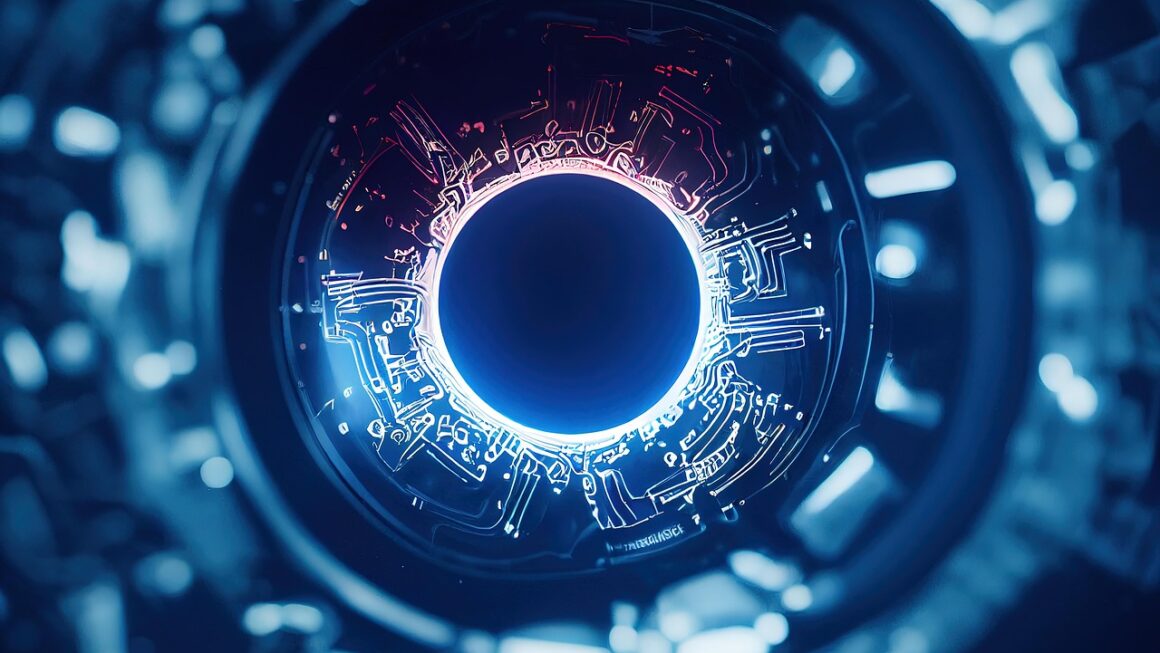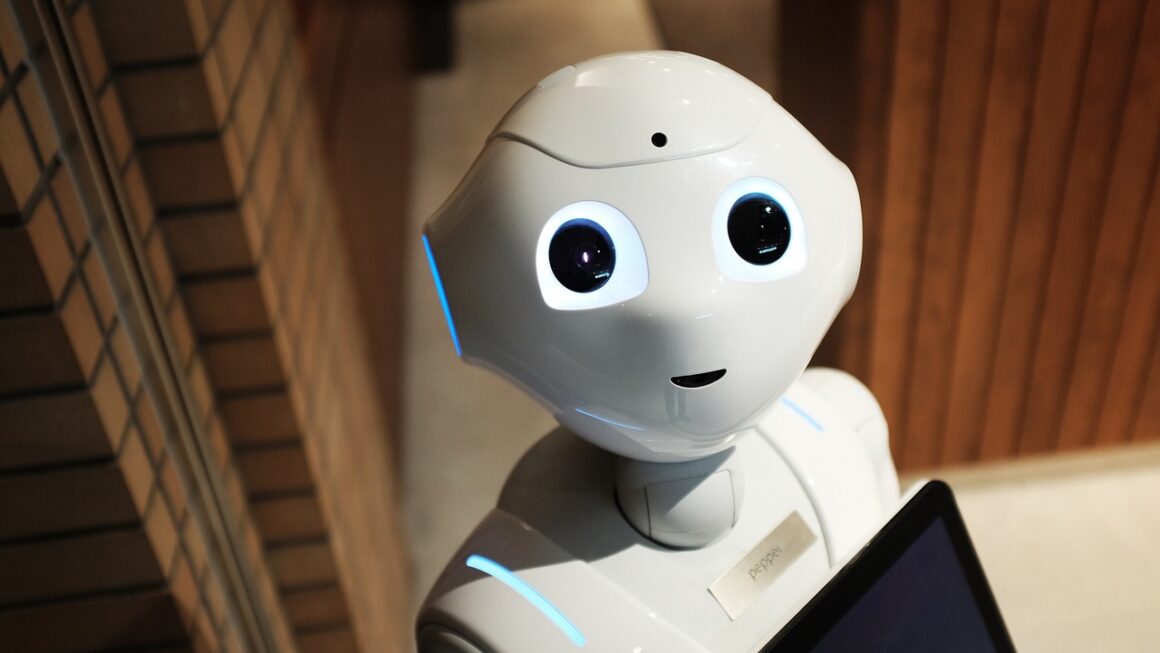Deep learning, a cutting-edge subset of machine learning, is revolutionizing industries from healthcare to finance. It allows computers to learn from complex data sets, identify patterns, and make decisions with minimal human intervention. This blog post will delve into the core concepts, practical applications, and the exciting future of deep learning. Get ready to explore how this transformative technology is shaping our world.
What is Deep Learning?
Defining Deep Learning
Deep learning is a type of machine learning that uses artificial neural networks with multiple layers (hence, “deep”) to analyze data and make predictions. Unlike traditional machine learning algorithms that require explicit feature engineering, deep learning models automatically learn features from raw data. This makes them particularly effective in handling complex, unstructured data like images, audio, and text. The depth of these networks allows them to learn hierarchical representations of data, enabling them to understand intricate relationships and patterns.
How Deep Learning Works
At its core, a deep learning network consists of interconnected nodes (neurons) organized in layers. These layers include an input layer, multiple hidden layers, and an output layer. Data flows through the network, with each layer transforming the data based on learned weights and biases. The weights and biases are adjusted during the training process using algorithms like backpropagation, which aims to minimize the difference between the network’s predictions and the actual values. This iterative process allows the network to learn and improve its accuracy over time.
- Input Layer: Receives the initial data.
- Hidden Layers: Perform complex computations and feature extraction. The more layers, the more complex the patterns the model can learn.
- Output Layer: Produces the final prediction or classification.
Deep Learning vs. Machine Learning
While deep learning is a subset of machine learning, there are key differences. Traditional machine learning often requires manual feature extraction, meaning humans need to identify and engineer the relevant features for the model to learn from. Deep learning automates this process, enabling it to handle unstructured data more effectively. Furthermore, deep learning models typically require significantly more data and computational power than traditional machine learning algorithms. In situations with limited data or resources, traditional machine learning might be a more practical choice.
Popular Deep Learning Architectures
Convolutional Neural Networks (CNNs)
CNNs are primarily used for image and video processing. They leverage convolutional layers that apply filters to input data, enabling them to detect patterns like edges, textures, and objects. Pooling layers reduce the dimensionality of the data, making the network more efficient. CNNs are particularly effective in tasks like image classification, object detection, and image segmentation.
- Example: Identifying different breeds of dogs in images. CNNs can learn to recognize the distinct visual features of each breed, such as ear shape, coat color, and facial structure.
Recurrent Neural Networks (RNNs)
RNNs are designed to process sequential data, such as text, audio, and time series data. They have a “memory” that allows them to retain information from previous steps in the sequence, making them suitable for tasks like natural language processing, speech recognition, and machine translation. However, standard RNNs can struggle with long sequences due to the vanishing gradient problem.
- Example: Generating text. An RNN can be trained on a corpus of text to predict the next word in a sentence, allowing it to generate coherent and grammatically correct text.
Long Short-Term Memory (LSTM) Networks
LSTMs are a type of RNN that addresses the vanishing gradient problem, allowing them to handle longer sequences more effectively. They incorporate “gates” that regulate the flow of information, enabling them to selectively remember or forget information as needed. LSTMs are widely used in tasks like machine translation, speech recognition, and sentiment analysis.
- Example: Predicting stock prices. An LSTM can analyze historical stock prices and other relevant data to predict future price movements. This is a complex task due to the volatile nature of the stock market.
Transformers
Transformers have revolutionized natural language processing. Unlike RNNs, they rely on self-attention mechanisms that allow them to weigh the importance of different parts of the input sequence. This enables them to capture long-range dependencies more effectively and to be parallelized for faster training. Transformers are the foundation of models like BERT and GPT, which have achieved state-of-the-art results in various NLP tasks.
- Example: Language translation. A Transformer can translate text from one language to another while preserving the meaning and context of the original text.
Applications of Deep Learning
Image Recognition and Computer Vision
Deep learning has significantly improved image recognition and computer vision tasks. CNNs are used in applications like:
- Facial recognition: Used in security systems and social media. Modern facial recognition systems can identify individuals with remarkable accuracy, even in challenging conditions.
- Medical image analysis: Assisting doctors in diagnosing diseases like cancer by analyzing X-rays, CT scans, and MRIs. Deep learning models can often detect subtle anomalies that might be missed by the human eye.
- Autonomous vehicles: Enabling self-driving cars to perceive their surroundings by identifying objects like pedestrians, traffic signs, and other vehicles.
Natural Language Processing (NLP)
Deep learning has transformed NLP, enabling more accurate and sophisticated text analysis and generation. Applications include:
- Machine translation: Translating text between languages with high accuracy.
- Sentiment analysis: Determining the emotional tone of text, used in market research and customer service. Companies can use sentiment analysis to understand how customers feel about their products and services.
- Chatbots and virtual assistants: Providing automated customer support and answering questions.
Speech Recognition
Deep learning has drastically improved the accuracy of speech recognition systems. Applications include:
- Voice assistants: Enabling voice-controlled devices like smartphones and smart speakers.
- Transcription services: Automatically converting spoken language into text.
- Accessibility tools: Helping individuals with disabilities interact with computers.
Healthcare
Deep learning is revolutionizing healthcare with applications like:
- Drug discovery: Accelerating the process of identifying potential drug candidates. Deep learning models can analyze vast amounts of data to predict the effectiveness and safety of new drugs.
- Personalized medicine: Tailoring treatment plans to individual patients based on their genetic makeup and medical history.
- Disease prediction: Identifying individuals at high risk of developing certain diseases.
Getting Started with Deep Learning
Choosing a Framework
Several deep learning frameworks are available, each with its strengths and weaknesses. Some popular options include:
- TensorFlow: An open-source framework developed by Google, known for its flexibility and scalability.
- PyTorch: An open-source framework developed by Facebook, popular for its ease of use and dynamic computational graph.
- Keras: A high-level API that simplifies the development of deep learning models, running on top of TensorFlow or other backends.
Choosing a framework often depends on your specific needs and preferences. TensorFlow is generally preferred for production deployments, while PyTorch is often favored for research and experimentation. Keras provides a user-friendly interface for beginners.
Learning Resources
Numerous online courses, tutorials, and books are available to help you learn deep learning. Some popular resources include:
- Coursera and edX: Offer courses on deep learning from leading universities.
- Fast.ai: Provides practical deep learning courses with a focus on real-world applications.
- TensorFlow and PyTorch documentation: Comprehensive documentation for the respective frameworks.
Practical Tips for Success
- Start with simple projects: Begin with basic tasks like image classification or sentiment analysis to build a solid foundation.
- Use pre-trained models: Leverage pre-trained models (transfer learning) to speed up the training process and improve performance. Pre-trained models have already learned general features from large datasets and can be fine-tuned for specific tasks.
- Experiment with different architectures and hyperparameters: Try different network architectures and fine-tune the hyperparameters to optimize performance. Hyperparameter tuning is crucial for achieving optimal results.
- Join online communities: Engage with other deep learning enthusiasts to learn from their experiences and get help with your projects.
- Focus on data quality: The quality of your data is crucial for the performance of your deep learning models. Ensure that your data is clean, labeled correctly, and representative of the problem you’re trying to solve.
Conclusion
Deep learning is a rapidly evolving field with the potential to transform numerous industries. By understanding the core concepts, exploring different architectures, and experimenting with practical applications, you can harness the power of deep learning to solve complex problems and create innovative solutions. The future of deep learning is bright, with ongoing research pushing the boundaries of what’s possible. Embrace the challenge, explore the possibilities, and become a part of this exciting technological revolution.




